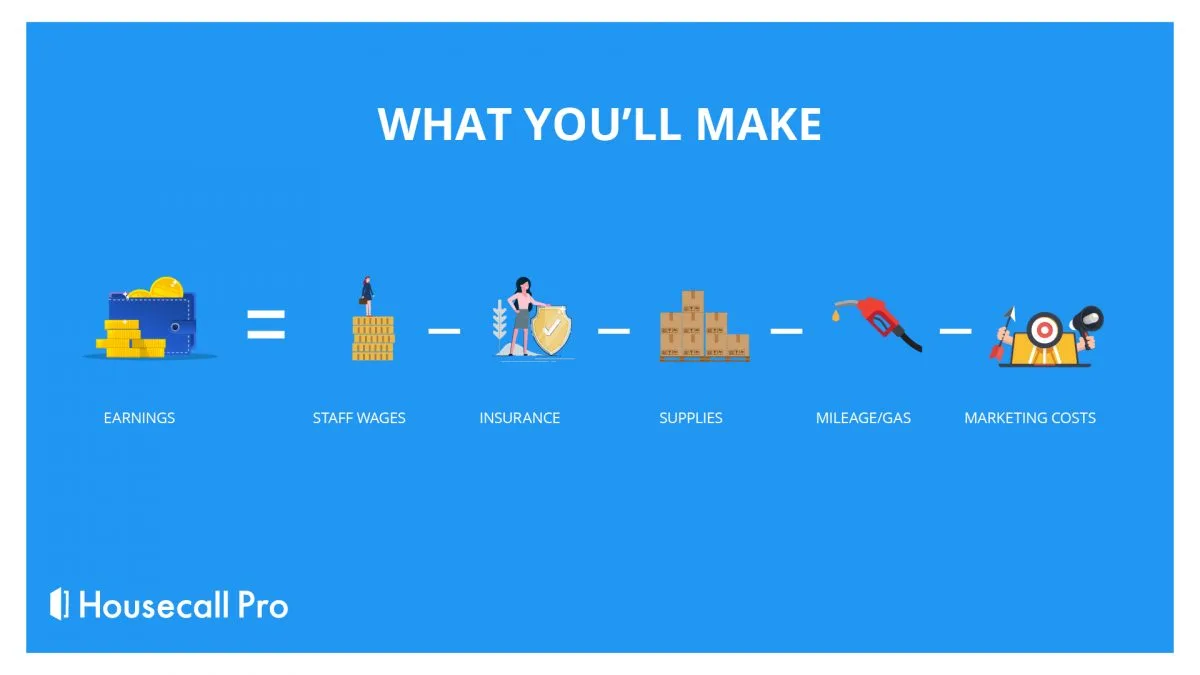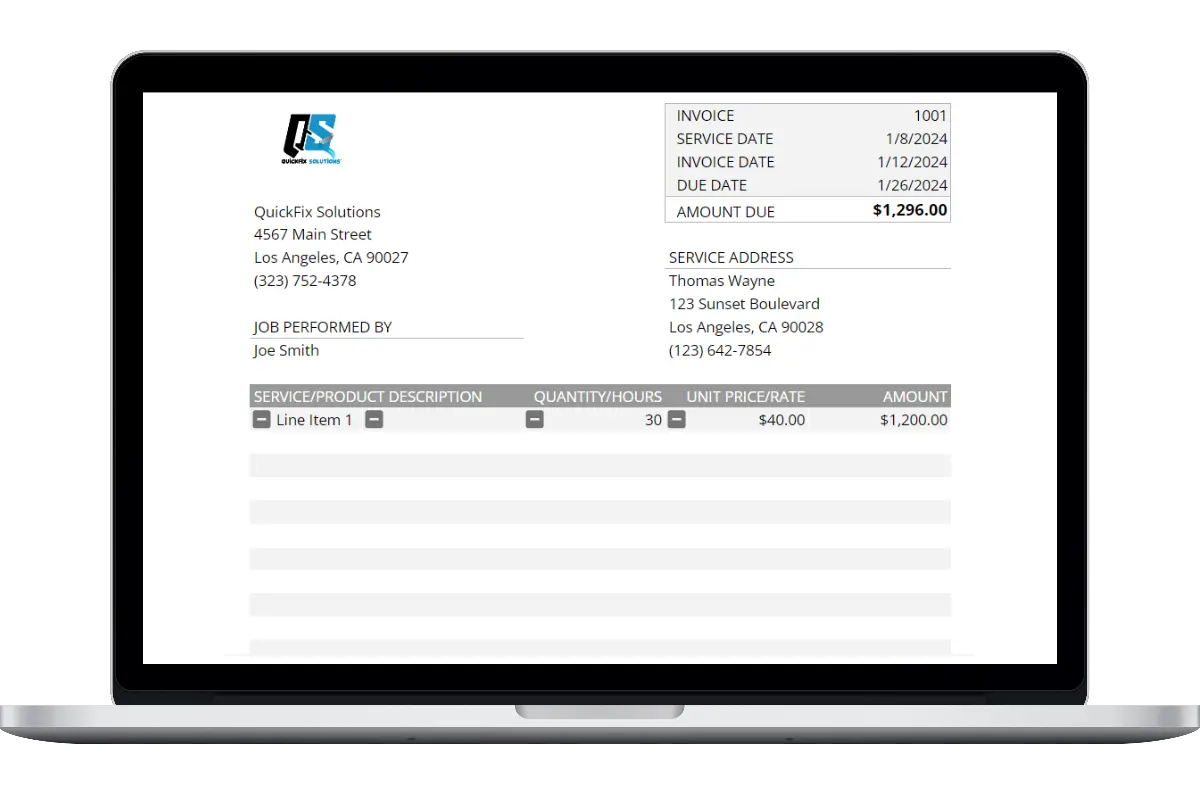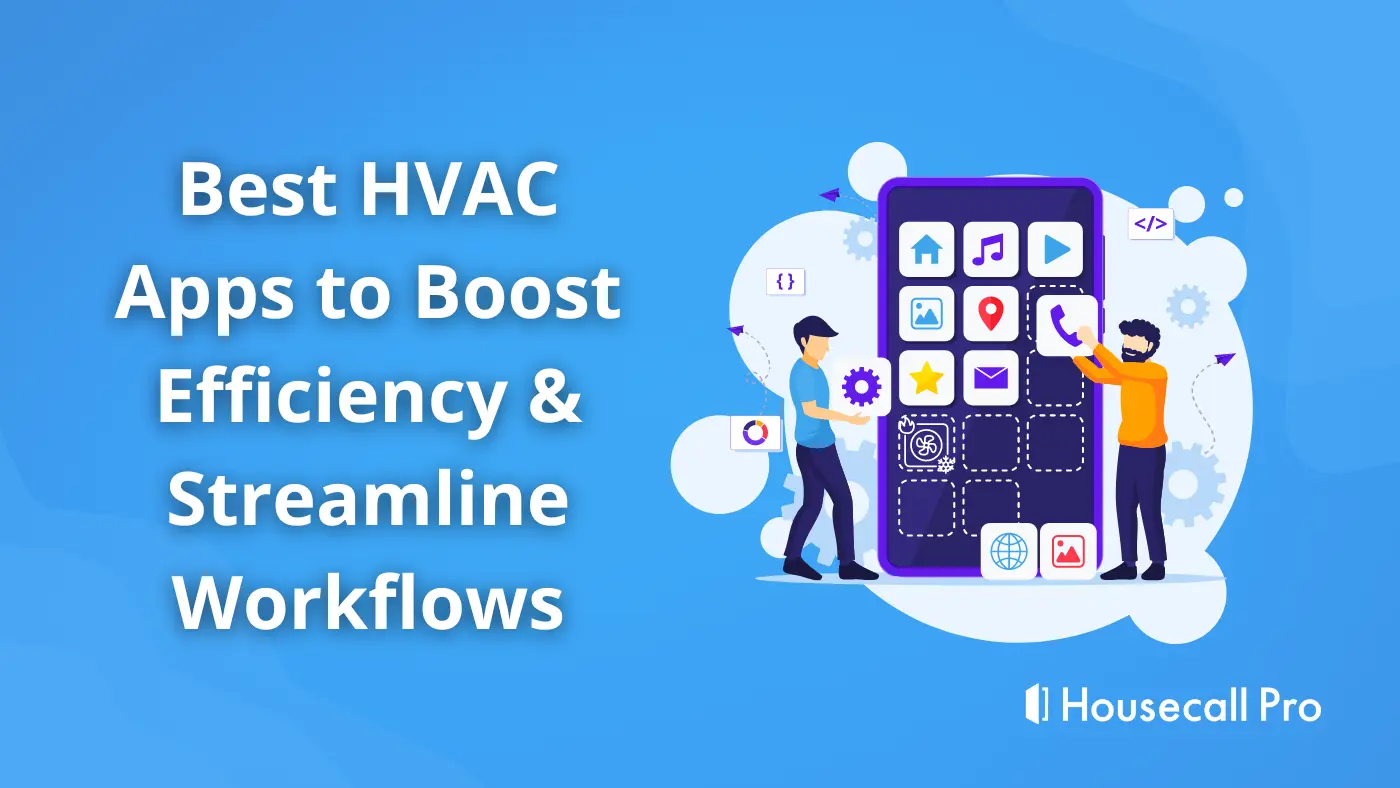
You know the trade, but might be new to running a business. In this guide, we list the steps you’ll need to take to start a residential or small commercial plumbing business. We’ve also pulled it all together in a printable check-off list.
The rest of the guide is filled with curated advice from successful plumbing business owners and other industry experts. This is all the stuff business owners wish they’d known when first starting out or common mistakes that marketing, sales, and financial experts see with new plumbing businesses.
How Much Money Do You Need to Start a Plumbing Business?
We’ve talked to many of our pros about what it took to start their business, and the numbers were all over the place. Every business’s financial needs vary based on location, specialization, and fluctuations in the economy. Here are some things to consider when calculating the funds you’ll need to start a business and where to seek help.
Steps
- Add up your business expenses
- Estimate your initial monthly revenue
- Calculate your break-even point
- Figure out your business credit score
- Compare financial options for your startup costs
- Write a business plan

Case Study
In 2005, Darryl Nocera sold his plumbing company, including five service trucks, in order to focus on his young kids. He worked for another company for the next fourteen years until his kids were grown. In 2019, he was finally ready to work for himself again.
Darryl saved for several years to be able to go out on his own. He already had his master plumber license and tools; he also intentionally kept costs low by choosing to work out of his house. Here were his initial expenses:
- $2,000 down on a brand new truck
- Around $500 on the business cards, uniforms, and patches for the uniforms
- Around $2,000 on a website
- $800 a month advertising budget
- $1,600 for equipment he didn’t already have
“I had everything except drain equipment. I recently added a drain machine that was over $1600 because my business demanded it, and rental charges from home depot were no longer justifiable.”
Assessing Your Financing Options
Of course, if you’re able to spend a couple of years saving up, like Darryl, that’s the best option. But if you’re not able to save everything you need, there are other business financing options.
Brand new businesses that haven’t started making revenue, don’t typically qualify for a regular commercial loan. Common alternatives to commercial lending include:
- Startup loans
- Microloans
- Friends and family loan
- Small Business Administration loan
- Home equity loans
- Business credit card
Pro Tip: Look For Federal or State-level Small Business Grants
There are many ways you can leverage assistance from external organizations and the government. Look to see if your state and local municipalities offer assistance to small businesses. Many offer local grants, tax deductions, and free coaching opportunities.
In addition, certain business owners who qualify as socially or economically challenged can apply for their business to be certified as women-owned or minority-owned— a status that comes with various benefits.
Creating a Plumbing Business Plan
Before you take out any loans, you need a detailed plan for your business. The Small Business Alliance offers a helpful step-by-step guide to writing a business plan. Also, view an example of a plumbing business plan.
Most lenders will require a business plan, but don’t just write it for them. Taking the time to craft a business plan will help give you direction, as well. Much of what we cover in this guide can go into your business plan, such as who your target customer is and how you plan on reaching them.
Plumbing Business Legal Requirements
If you’ve worked as a plumber, you’re already aware of the licensing requirements of your state. But to run your own business, you’ll also need to register your business on the federal, state and local levels, including registering for a tax ID. You’ll need this ID to open a business banking account and get insured. If you’re not sure how to register, you can work with a registered agent.
See plumbing licensing requirements in detail:
Steps
- Make sure you have all the licenses you need
- Incorporate and register your business
- Apply for a tax ID
- Open business bank account
- Apply for insurance and bonding
Shopping for Insurance
Shop for insurance through an independent broker that works with multiple insurance companies. They can help you shop around for the best price. Also ask other contractors what companies they work with.
The Technical Stuff
For a lot of new plumbing companies, the technical stuff is the most overwhelming. To make things easier, we’ve outlined the types of tools you’ll need to get started and some of the exact brands that our pros regularly talk about and use.
Steps
- Set up a website and social media profiles
- Shop for and invest in tech platforms (see chart)
- Create calls-to-action (CTAs) on your website and social media profiles
Why Offer Online Booking

Did you know that 56% of people are frustrated with the inconveniences of scheduling over the phone? With over 30% of people more likely to choose a business that offers online books, it’s a wise choice to have online bookings (especially if you’re new and just starting!). If you’re curious about where to start your search, have a look at our plumbing software to start.
Additional Resources From Our Blog
- How to create a website that attracts customers
- How to write a plumbing proposal
- How to create a plumbing estimate spreadsheet
- Seven essential apps for plumbers
Plumbing Tools and Equipment
Whether you’re on a budget or looking for high-quality, sturdy equipment, we’ve listed a few different options below.
Steps
- Assess and fill tool inventory
- Rent office front and/or warehouse space (if needed)
- Invest in a service van or truck
Invest in Uniforms
Did you know 75% of customers prefer it when auto workers wear uniforms? Plumbing professionals are no different.
Field technician uniforms can make you look more professional and will help boost brand awareness. Even if you’re a one-person shop, you can order one with your logo. It’s not too expensive and can add a lot of value to your brand!
Choosing the Right Service Vehicle
The largest single expense for new plumbing businesses is often a service van or truck. Thankfully auto loans tend to be easier to obtain and have lower interest rates than other business loans. Check out our list of different plumbing vans you should consider. The list also dive into detail what plumbing tools need to go in the van, and helpful tips on how to keep the vehicle neat and tidy!
Your Target Market and Specialization
Here’s where we get into the finer strategy of your business. Do your website and the rest of your branding efforts speak to the people you most want to do business with? Your messaging should speak directly to your ideal customer. Knowing who you want to work with on what kinds of projects will help you fine-tune your business plan and brand.
Steps
- Outline your target market and ideal customer
- Decide if you want to specialize
- Update your brand messaging and service offerings accordingly
Your Target Market and Ideal Customer
“If we can see Joe Jones through Joe Jones’ eyes, then we can sell what Joe Jones buys … That messaging and that clarity of who our customer is, informs how we write the content for our website, how we write our social posts, the types of TV ads that we run, the types of YouTube video ads that we run.” Josh Nelson, Plumbing and HVAC — Internet Marketing Podcast.
So who is your ideal customer? The vast majority of residential plumbers target homeowners, but there are other options, such as:
- Builders and General Contractors: If you love working with new construction or remodels, builders and contractors can become great clients or partners as they’re always in need of a plumber to install the plumbing systems.
- Realtors and Property Managers: Realtors commonly recommend professionals that can assist with property maintenance before or after a sale. Meanwhile, property managers can keep you busy maintaining multifamily properties or houses they rent out. A newer group to target are folks who maintain rental properties through sites like Airbnb or Turnkey.
Outline your target market and the specific individuals you want to work with. Include everything you can about their demographic. Where do they live? What’s their average salary? Are they married or single? Finally, what do they care most about when it comes to plumbing services?
Pro-tip: Look at the reviews of your competition. What do people mention most often, both positively and negatively? This can give you an idea of what they value highly.
Do You Want to Specialize?
Examples of specializations include new construction, home warranty, or high-end plumbing.
Roger Wakefield, a plumbing business owner with over 38 years of experience, advises people to ask themselves whether they like to build or fix things. Understanding what you enjoy will help you make the tough decisions when it comes to picking a direction for your plumbing business.
When it comes to specialties, make sure you select an area that:
- Has demand in the market
- Is something you’re outstanding at
- Is something you enjoy
Setting Your Plumbing Services and Rates
Steps
- Create a list of services you’re able or interested in offering
- Create a plumbing price list for all of your services
- Choose between a flat rate or time and materials pricing structure
- Create a contract template
- Write up a terms and conditions document
Setting Your Rates
Your previous experience and industry standards can be a great benchmark when it comes to setting your rates. But when you’re running your business, there are a lot of additional expenses you might not have considered when working as a tech.
We recommend you start with a plumbing services pricing list based on how long the average project takes and roughly how much it will cost. With a price list, you can do a flat-rate pricing system or hourly approach.
The biggest decision when it comes to setting your rates is whether to offer flat rate or hourly services.
See a fuller list of the benefits and challenges of hourly and flat rate pricing. Also, check out a sample plumbing flat rate menu from our partner Labtorio.
If you’re looking for plumbing flat-rate pricing software, Housecall Pro offers a powerful solution that can help you streamline your pricing and invoicing processes. With our software, you can easily create and manage your plumbing flat rate pricing menu, automate your invoicing and payment processing, and more.
Additional Resources From Our Blog
- How to create a website that attracts customers
- How to write a plumbing proposal
- How to create a plumbing estimate spreadsheet
Plumbing Marketing and Advertising
If you don’t have an existing customer base, positive reviews, or presence in your local community yet, those initial leads are hard to come by. But before you spend tons of money on advertising, we recommend building up your online presence and in-person networking. These strategies can save you money in the long-run and help you find organic leads.
Steps
- Create a marketing plan
- Design business cards, van wrap, and other marketing materials
- Sign up for Google My Business
- Claim your business on other lead generation platforms
- Optimize your website for search engines (SEO)
- Join digital and in-person networking groups
Do You Need to Pay for Advertising?
When you’re starting out, it might be tempting to push tons of promotions just to get your name out there and get the phone ringing. We’re not saying you shouldn’t run ads for your new business, but there are other ways (free ways) to accomplish these goals, as well. Here are some of our favorites:
Start with your Family and Friends
This might sound like a no-brainer, but have you reached out to your network to tell them about your new business? Consider sending a mass email (bcc everyone to protect their privacy) and offer a friends and family discount. Ask them to share the email with others.
Become Active in Local Facebook Groups
Most regions have Facebook groups for local homeowners associations, small businesses, local moms, etc. Introducing yourself can begin to build name recognition of your business.
Get Involved with Local Business Groups
Many of our pros recommend organizations like Business Network International (BNI) that are designed to build local referral networks.
Network with Local Pros
We maintain local meetups for pros in over a dozen areas across the U.S. These meetups offer pros an opportunity to network with each other and referrals are highly encouraged.
Focus on Customer Retention Over New Leads
Building strong relationships with your customers is critical to your long-term success. It’s costly to serve only one-off customers and not a sustainable approach to business. That’s why your ultimate goal should be to turn first-time consumers into lifelong customers.
To continue the relationship after the service, we recommend you also use follow-up marketing tools to make sure your customer is satisfied and remembers your business.
Additional Resources From Our Blog
- How to get more leads
- Guide for plumbing blogs and SEO
- Plumbing ad examples
- Facebook ads for plumbers
Hiring
Staff is probably the biggest stumbling blocks to growth. You can’t grow without the right team. But you can’t hire the right team without enough initial growth to sustain another person’s salary. The first thing we’ll look at in this section is how to know when you’re ready to hire.
Steps
- Assess the numbers (what can you afford?)
- Research the legal requirements (federal, state, and local) of hiring someone
- Outline the hiring and onboarding processes
- Set up functions to handle salary and benefits
- Create job listing ad
How to Know When You’re Ready
If you’re turning down work or don’t have time to work on the business, then perhaps it’s time to hire someone. Some plumbing businesses start out with an additional part-time technician or office assistant. It’s a much bigger leap to hire someone full-time. The biggest hurdle here is whether your business will remain stable enough to sustain another person’s salary.
Before posting that ad, here are some things to consider:
- Look at your numbers. Analyze your revenue over as long of a time period as you can. If you see continuous growth over a six or 12-month period, there are better chances that you’ll be able to sustain growth after hiring.It’s also helpful to know roughly how many new customers you’ll need to support an employee. Have a plan for how you’ll get and maintain these new customers.
- Be prepared to onboard quickly. The longer it takes to train someone, the longer you’ll be covering their salary without your new hire pulling their own weight. Have all training processes thought out before posting a position.
- Leverage technology first. Technology can help you speed up and simplify much of running your business. When you’re able to streamline your business processes, you’ll be in better shape to train a new hire and make the most of your time in the field.
A Happy One Man Operation
Not every business owner dreams of growing their company beyond what they can handle on their own. Take Darryl Nocera. Darryl has done just about everything: run a company with multiple techs working under him, worked for someone else, and now he’s content running a one-man operation:
“It gives me control over every job that’s done. I’m also very customer-oriented, and I don’t just create a customer base. I like to actually relationships with my customers. I’ll sit down, and they’ll invite me in to the coffee table and have coffee and we’ll talk about everything that has to do with anything except plumbing for 30 minutes, an hour. Just developing that relationship with the customer.
“It’s not all about money, but obviously we get into business because we want to be able to support ourselves. So you can open up a business and have three, four, or five trucks running, and as an owner, after everything’s said and done, you can make $100,000 to $300,000 a year. Or you can go out on your own, not have the headaches and all the overhead, and come pretty close to that same type of revenue.”
Whether you want to keep your operations small or grow to seven digits and beyond, that’s one of the benefits of running your own company: it’s your vision, your decision.
Additional Resources From Our Blog
Where to Go From Here
Starting your plumbing business can be one of the best decisions you will ever make, but also one of the most challenging. Thankfully, you’re not alone. There are communities and organizations ready to help.
The two largest trade organizations that our pros are involved in are:
- International Association of Plumbing & Mechanical Officials (IAPMO)
- Plumbing-Heating-Cooling Contractors Association (PHCC)
See also:
- A more comprehensive list of plumbing associations and & organizations
- Find your local union at the bottom of this website.
- A list of online plumbing communities
- Soft skill training programs like those offered by the Home Builders Institute.
For general business resources, we recommend:
Check out a longer list of small business associations.






